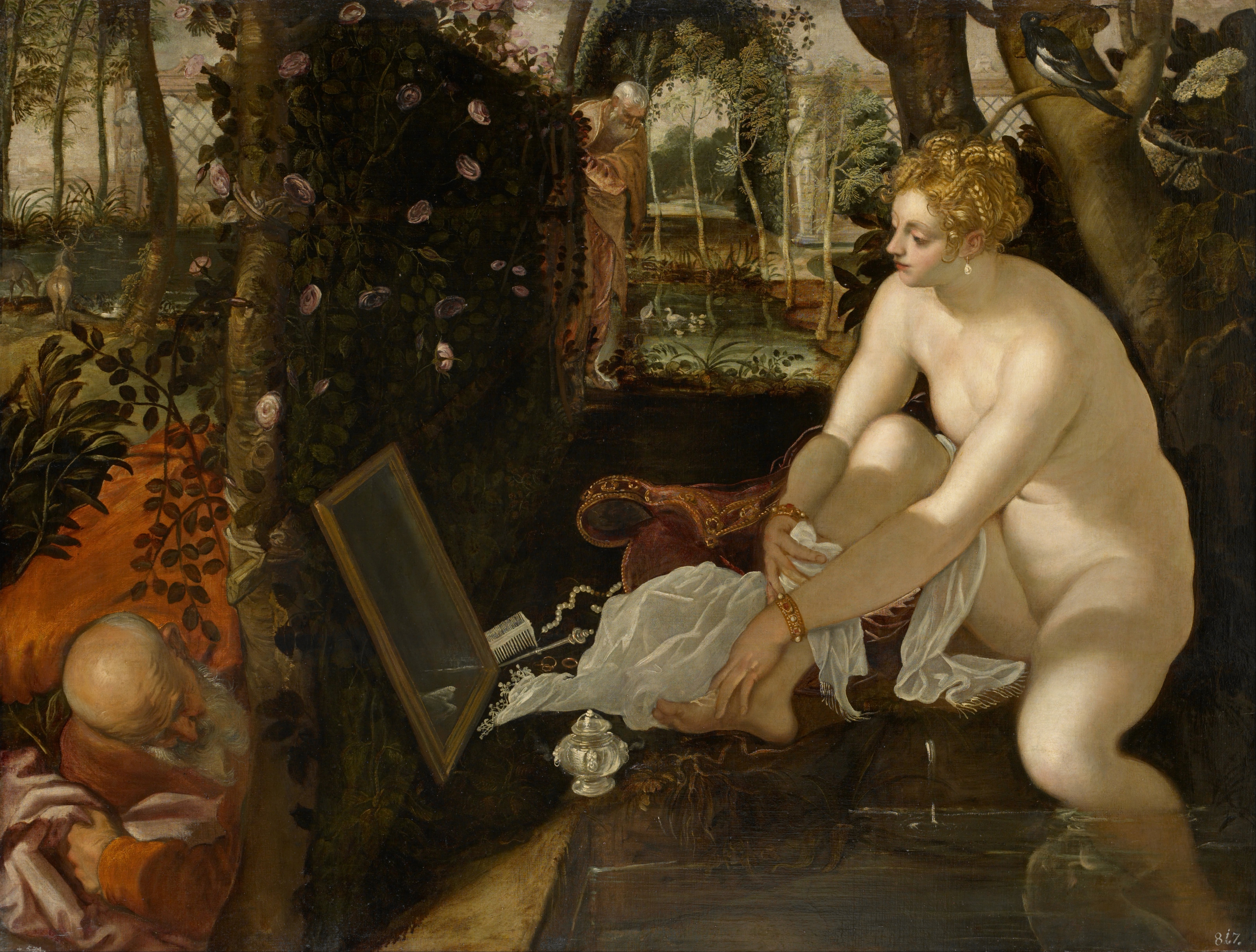 |
The Judgment of Paris,
Lucas Cranach
1528
|
John Berger’s analysis of the male
gaze can most easily be described as a perspective of the world through the
eyes men. However, simply stating that the male gaze is only a male perspective would be incorrect, because the male gaze
runs much deeper. The gaze is deeply rooted in our society as a form of control
through male dominance. Traditionally, the male gaze is seen through paintings
of women who convey a blank expression. Although, the blank expression says
more of the painted women with the use of their eyes and who they are looking
at, rather than strictly their facial expression. For example, Berger describes
the nature of women as being, “the surveyor and the surveyed…two constituent yet
always distinct elements of her identity as a woman” (Ways of Seeing, p.46). According
to Berger, the women painted in the traditional arts are women who look directly
at the spectator and not the painter. The woman’s gaze almost says that she
sees the spectator and acknowledges him, so that he may have her in a form that
captures her very essence. In this case, the women are the surveyors. Berger
goes deeper when he mentions, in the previous quote, that the other part of a
woman’s identity is her being the surveyed. Berger claims that women are born
to be looked at and her very existence is for the appraisal by others. For
instance, he says, “Her own sense of being in herself is being supplanted by a
sense of being appreciated as herself by another” (Ways of Seeing, p.46). This
quote strikes at the heart of an old traditional way of thinking that continues
to exist. The quote practically states that women are simply a prize to be
adorned by men and the only trait that matters is their beauty. If a woman is
not deemed “beautiful” then she will not be considered as a “prize worth
having,” let alone a woman. The male gaze is so pervasive in art and pop
culture due to the way we raise our children. We raise girls to believe that the way they appear to others is the most important feature they have no matter what underlying skills, talents, or superior intelligence they potentially could display if given the chance. As a result, some may believe that the existence of women is to
compete with other women through a beauty contest and nothing more. To add to that, video
games display an over-sexualization of women, most likely for the pleasure of
men, with the use of character designs. This proves that the male gaze continues to
exist today in modern art.
 |
Susanna and the Elders,
Tintoretto
1555
|
- Aaron Gangadin
Sources:
Berger, John, and Michael Dibb. Ways of Seeing. London: BBC Enterprises, 1972.
hooks, bell, 1952-.
The Will to Change: Men, Masculinity, and Love. New York: Atria Books, 2004.
Print.Berger, John, and Michael Dibb. Ways of Seeing. London: BBC Enterprises, 1972.
No comments:
Post a Comment